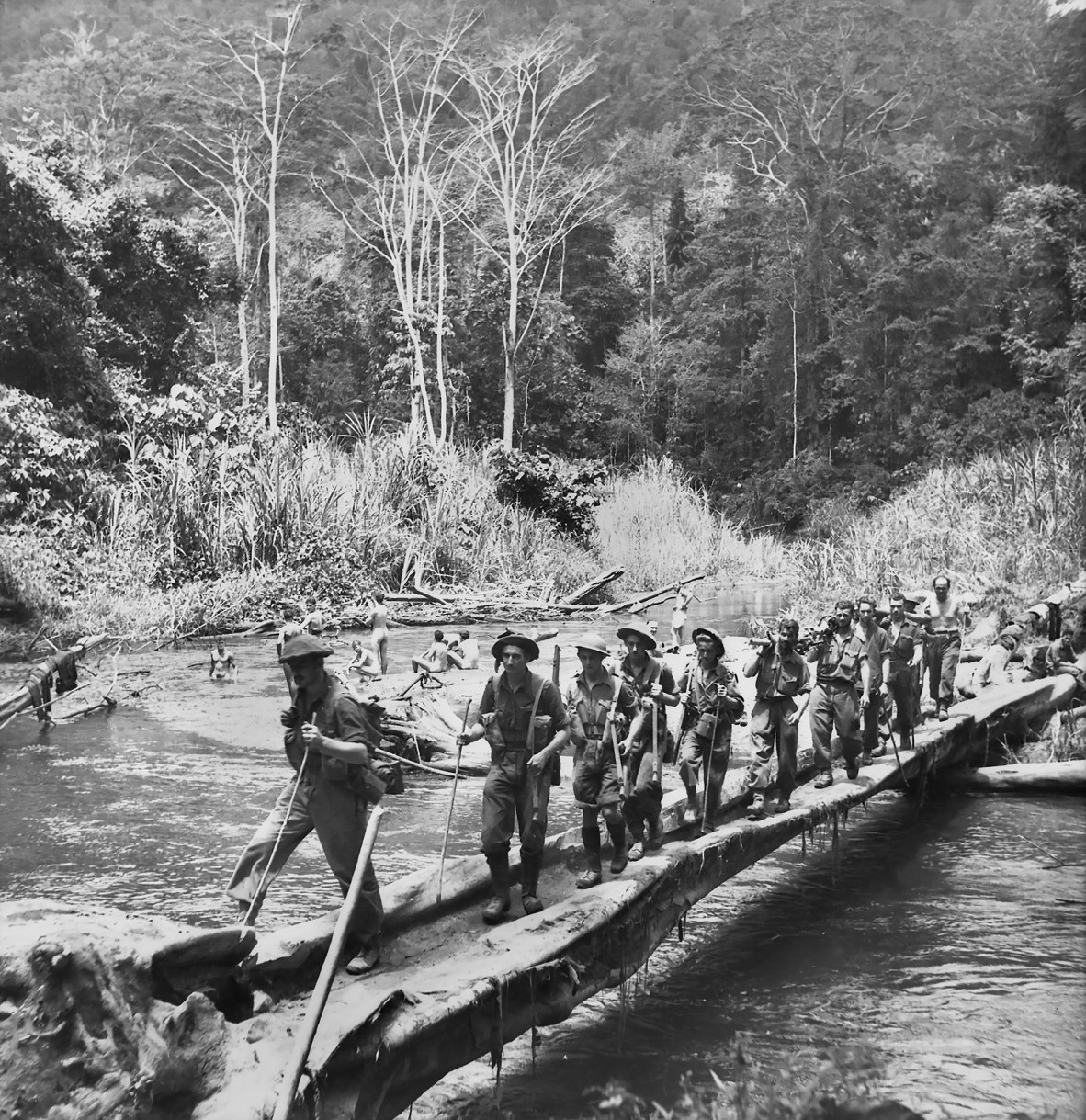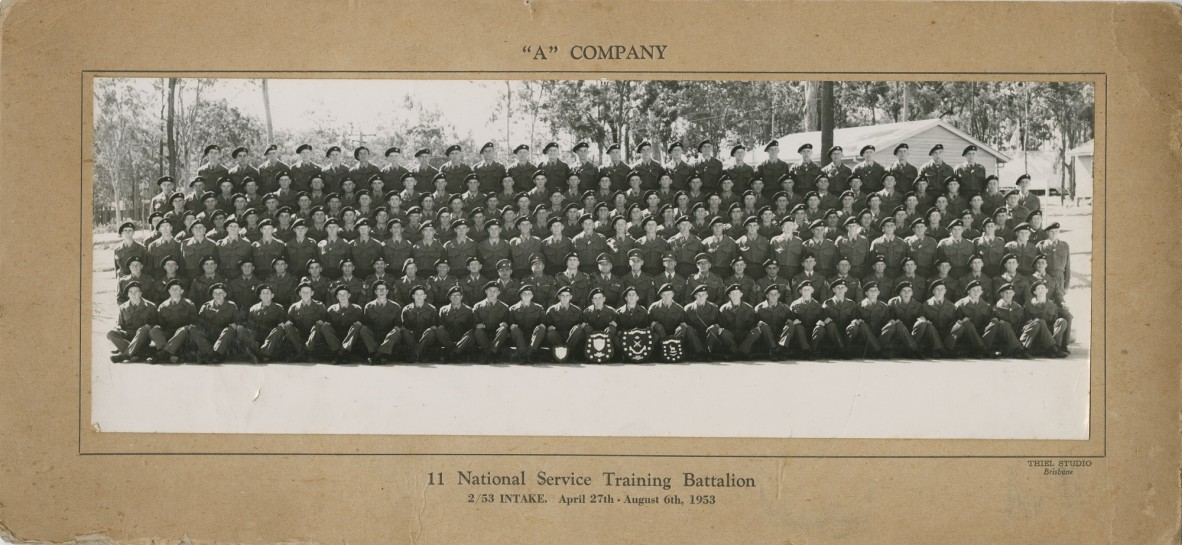
National Service intake April 1953, 32652 Bill Porter National Servicemen 1953 photographs, State Library of Queensland
Since Federation, the Australian Government has implemented compulsory military service four times.
Universal Service Scheme 1909-1929.
Alfred Deakin introduced the first system of compulsory military service in Australia when he proposed the ‘Universal Service Scheme’ in 1909. This scheme was passed into Law in 1911 and was unusual in that it was implemented during a time of peace.
The Legislation established compulsory naval or military training for all Australian males between the ages of 12 and 26 who were British subjects. Those aged between 14 and 17 joined cadet ranks in school, and men over 18 joined the Citizen Forces, known as the Citizen Military Forces (CMF) from 1916, which comprised part-time volunteers. This scheme did not allow for soldiers to be conscripted for overseas service.
During the First World War, as numbers of volunteers started to fall, Labor Prime Minister Billy Hughes tried to introduce full conscription for overseas service. This hotly debated topic was decided by two referenda in October 1916 and December 1917 respectively. Both times conscription was narrowly rejected, causing enormous bitterness in the community in general and within the Labor Party in particular. The Universal Service Scheme was abolished in 1929 by the Labor Government which by this time had withdrawn its support for compulsory military training.
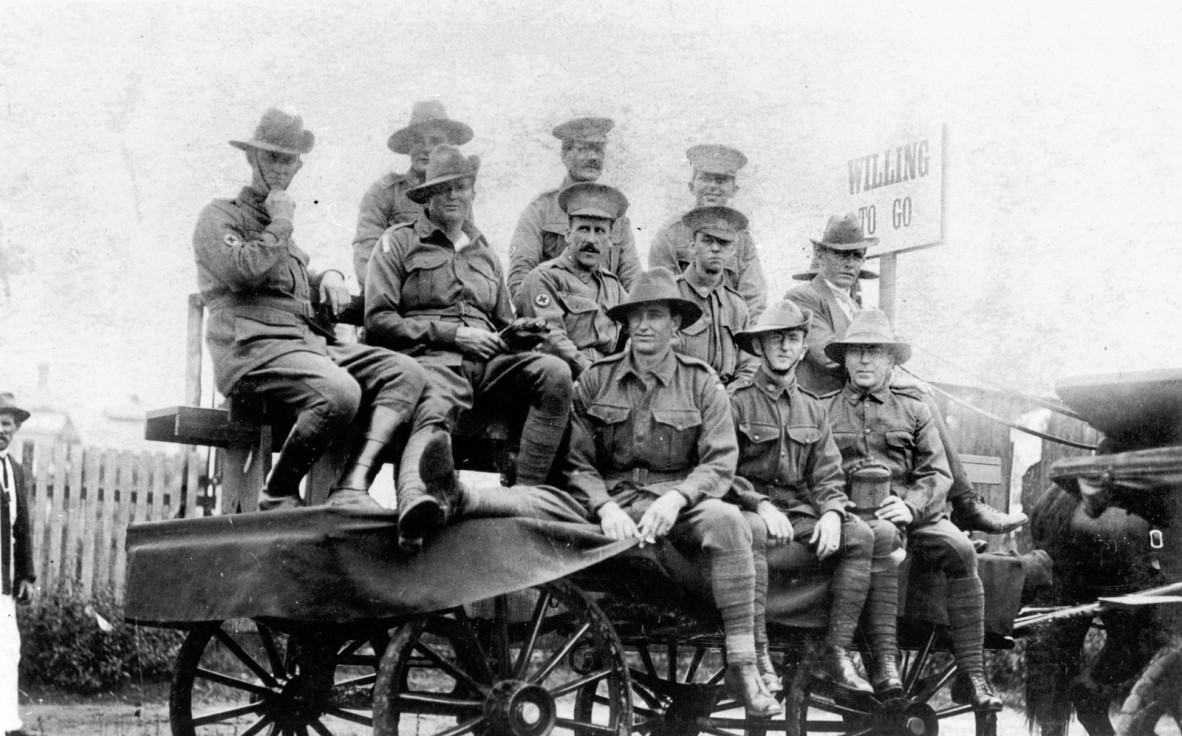
WWI Recruits on a parade float in Brisbane, ca. 1915. The sign on the float ‘Willing To Go’ refers to conscription, an issue that was hotly debated during WWI, circa 1916, John Oxley Library, State Library of Queensland, Negative number 146319
Universal Service Scheme: 1939-1945
When Prime Minister Robert Menzies announced Australia was at war with Germany on 3 September 1939 Australia’s military forces were seriously depleted, in fact Australia’s regular army comprised only 3000 men. Consequently, on 20 October 1939 Menzies announced the reintroduction of compulsory military training, with effect from 1 January 1940. At this stage all unmarried men aged 21 were called for three months military training with the CMF. These men could only serve in Australia or its territories, which included areas of Papua and New Guinea.
Despite the feeling of elitism among soldiers of the Second AIF towards the CMF (often referred to as Chocolate Soldiers or Chocos), soldiers from both the CMF and the Second AIF fought alongside each other with great distinction in campaigns such as the Kokoda Track Campaign in the Australian Territory of Papua.
By 1942 volunteer numbers were waning. At this time the CMF had about 262,000 troops, while the AIF stood at about 171,000. As a result, in November 1942 Curtin argued that it was necessary to extend the region in which conscripts could serve to include most of the South West Pacific and the necessary legislation was passed in January 1943. This region took in not only Australia, Papua and New Guinea, but also east Java, southern Borneo, Dutch New Guinea and various other islands up to the Equator. CMF units such as 11th Brigade would form part of the Australian forces in the Dutch East Indies in 1943 and 1944.
National Service Scheme: 1951-1959
Influenced by the outbreak of the Korean War in 1950 and the Cold War tensions at this time, Menzie’s Liberal government brought back compulsory military training in 1951. Under this National Service Scheme eligible 18-year-old men had to undertake 176 days (about 6 months) of military training. Of the 500,000 who registered 227,000 were called up. Overseas service was mandatory for the 7,000 Navy and 22,000 Air Force recruits but voluntary for the 198,000 Army servicemen, though most of them volunteered to go. None of the National Servicemen in this scheme would see active service and it was discontinued on 24 November 1959.
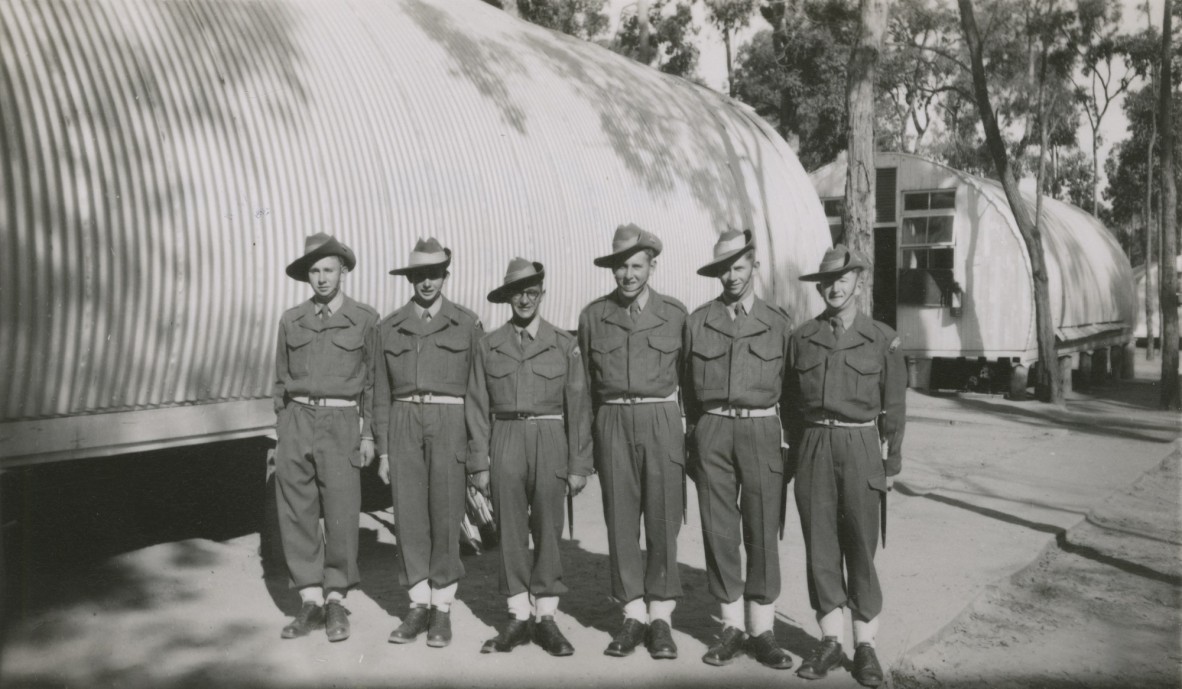
National Service Recruits, 1953, 32652 Bill Porter National Servicemen 1953 photographs, John Oxley Library, State Library of Queensland
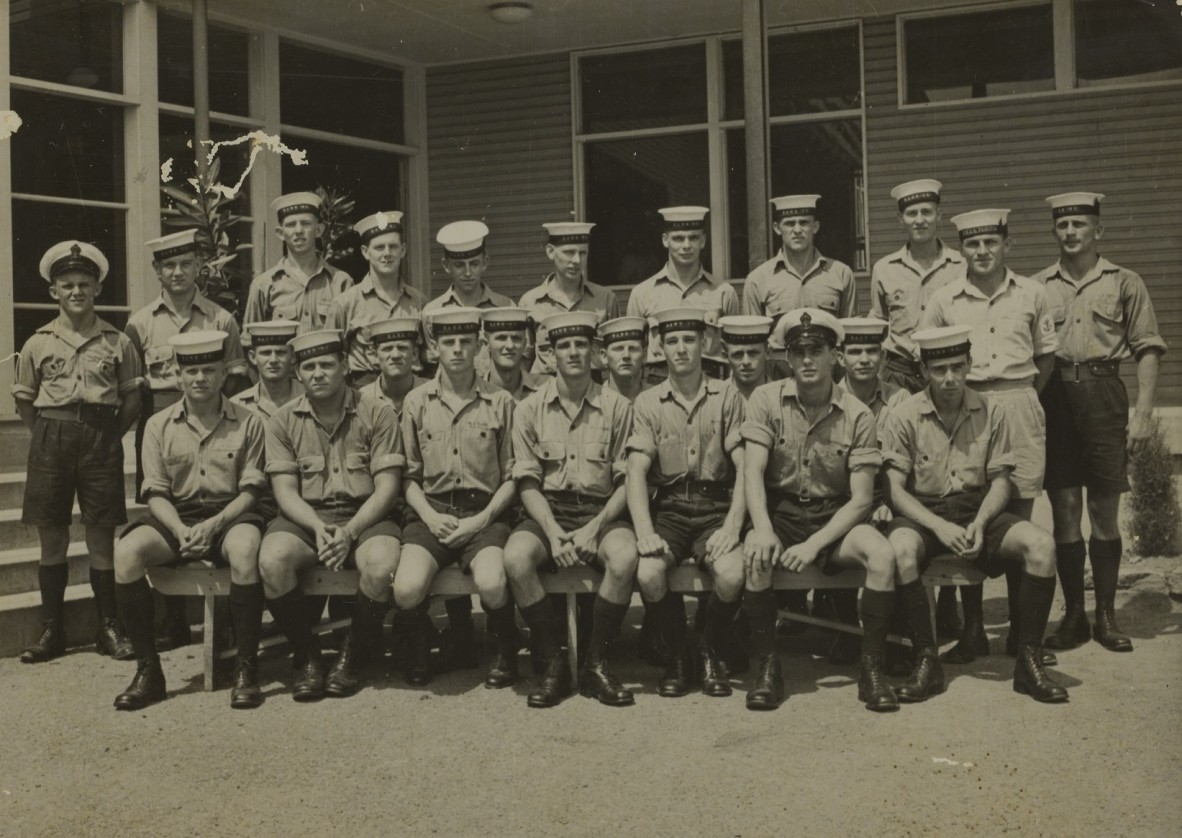
National Service Navy Recruits, 1956, 32648 William Malcolm Parker collection, John Oxley Library, State Library of Queensland
Second National Service Scheme: 1964-1972
The last National Service Scheme was introduced in 1964 when conflicts in Southeast Asia and Vietnam raised fears about Australia’s security. The National Service Bill became law in late 1964, with new powers introduced in May 1965 enabling the Government to send conscripts overseas. Selection for military service was held twice a year and was based on a birthday ballot for 20-year-old men. If your birthday was drawn from the ballot and you met the security and fitness criteria you could be selected to serve two years in the Army (reduced to 18 months in August 1971) then three years part-time in the Army Reserve.
From 1964 until it was abolished by the Whitlam Government on 5th December 1972, more than 804,000 men registered for National Service. Over 60,000 of these were called up to serve and more than 15,300 of them would serve in the Vietnam War. Most, but not all units gave National Servicemen (Nashos) the choice of active service and the majority volunteered. As a result, 2 died in Borneo and in the Vietnam War 210 were killed and more than 1200 were wounded.
The Vietnam War was the cause of great social and political dissent in Australia similar to what was seen during the conscription referenda of the First World War. These domestic divisions over the Vietnam War saw National Servicemen, particularly those who had seen active service, in the undesirable position of having been conscripted by a selective ballot and then subjected to open disdain by some of the Australian public.
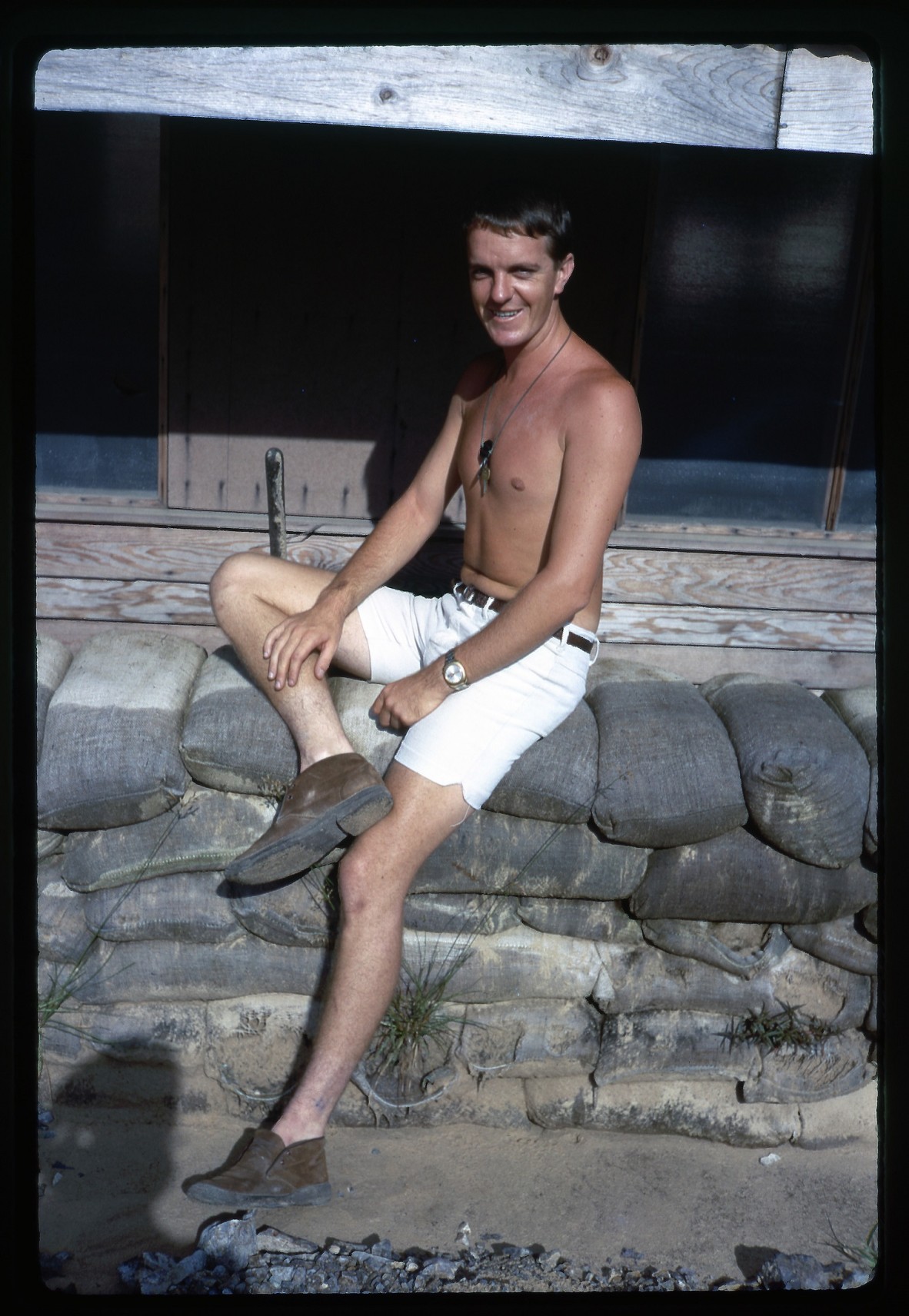
David Kelly was conscripted into National Service and served in the 17th Construction Squadron in Vietnam from 1968–1969. David’s primary responsibilities within the squadron were machine maintenance of bulldozers, graders, trucks and land rovers. David Kelly Slides of Australian Servicemen in Vietnam, John Oxley Library, State Library of Queensland, Negative number: 31513
Recognition at last:
In 1987 Barry Vicary, a 1965 Nasho and Vietnam Veteran, founded the National Servicemen’s Association of Australia in Toowoomba, Queensland. The purpose of this organisation was to seek a better deal for National Servicemen and petition for a medal recognising their service. Unfortunately, Barry would not live to see his medal as he passed away in 1991 and it was not until 2001 that the Government awarded the ‘Anniversary of National Service 1951-1972 Medal’ in recognition of the contribution of National Servicemen to Australia’s defense in time of need.
On 8 September 2010, thousands of former National Servicemen gathered in Canberra to witness the official dedication by the Governor- General of their new memorial fountain located in the Eastern Precinct of the Australian War Memorial.
14 February is National Servicemen’s Day (no women served in the National Service), a day when we honour those who served Australia through compulsory military training.
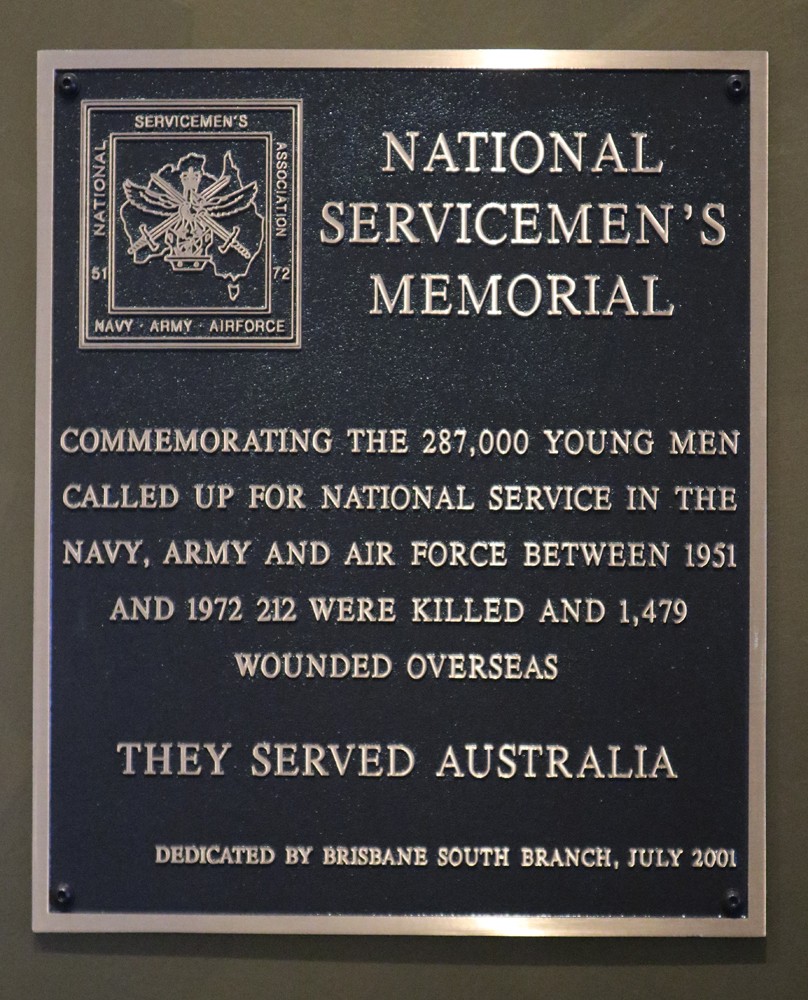
National Servicemen's Memorial plaque, Anzac Square and Memorial Galleries
Comments
Your email address will not be published.
We welcome relevant, respectful comments.
